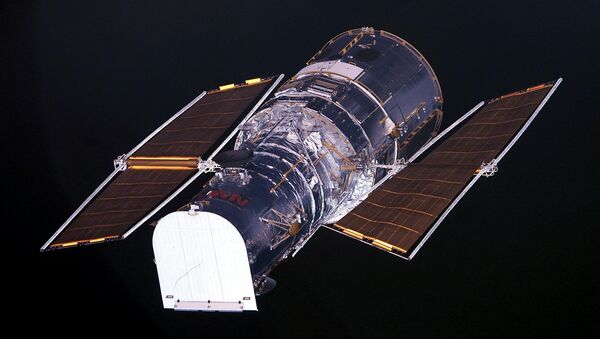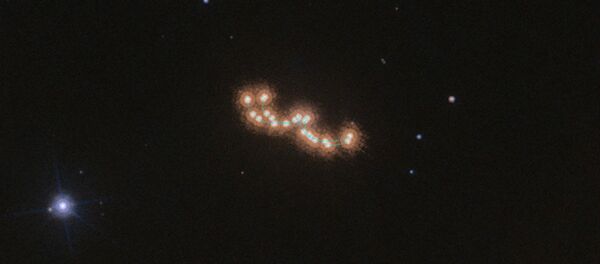Hubble trained its eye on a blurry disk galaxy 11 billion light-years away. Old this galaxy might be, but it is still actively producing stars, making it a subject of interest for astronomers. It was one of 70 galaxies selected by the Sloan Giant Arcs Survey to be studied by Hubble to better understand the complicated phenomenon of gravitational lensing.
But the galaxy is far, far away, and if it were an ordinary galaxy we'd have no hope of studying it with modern instruments. However, one effect of gravitational lensing is that it can amplify distant light sources: the phenomenon occurs when very large distributions of matter (such as galaxies or galaxy clusters) distort light emitting from them, which can create arcs of light and mirroring effects.
As a result, the distant galaxy is 30 times brighter than it would normally be – but its light is also distorted and confused, making it difficult to image. Enter NASA's Goddard Space Flight Center and their new software, which removes the distortions and translates the light into an image of the galaxy.
"When we saw the reconstructed image we said, 'Wow, it looks like fireworks are going off everywhere,'" said Goddard astronomer Jane Rigby to phys.org.
The resulting image showed a fertile galaxy filled with regions of newborn stars. The oldest galaxies observed by humans tended to have a few large star-forming regions, 3,000 light-years or more in length. This galaxy had dozens of (comparatively) small star-forming regions 200 or 300 light-years long, which contradicts previous theories about such things.
"There are star-forming knots as far down in size as we can see," said doctoral student Traci Johnson of the University of Michigan, lead author of two papers associated with the project. Johnson added that without gravitational lensing, the galaxy would be too far away for Hubble to study in any actual detail.
Although Hubble is starting to get up there in years, it's far from finished in its search of the cosmos. NASA intends to operate the telescope into the 2030s. However, it will soon be joined by a much more advanced instrument: the James Webb Space Telescope, slated for a 2018 launch. James Webb will explore the furthest reaches of the cosmos, the red stars that formed shortly after the Big Bang and through the clouds of interstellar dust that block observation from current instruments
"With the Webb Telescope, we'll be able to tell you what happened in this galaxy in the past, and what we missed with Hubble because of dust," said Rigby.




